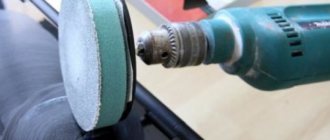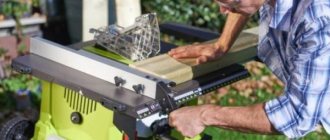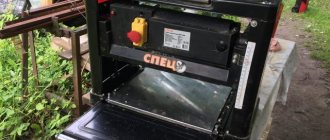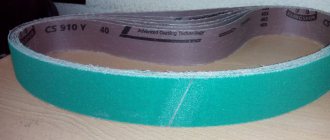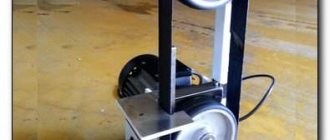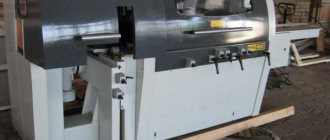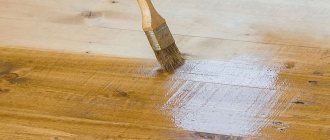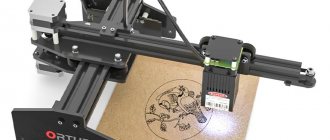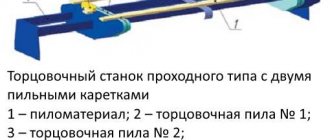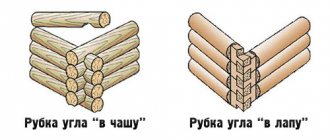Sanding wood is a mandatory procedure prior to finishing. To perform the work, special machines are used that operate on different principles and grind the material in different directions. However, the price of such devices is quite high. For a home craftsman, it is not always advisable to purchase equipment that will be used occasionally. It is better to make a wood grinding machine with your own hands, which will cost much less and will allow you to get a completely effective device.
Why do you need a grinding machine?
The purpose of the grinding machine is clear from the name itself - it is designed for grinding. That is, this mechanism is designed to process material (be it wood or metal). The goal is to achieve the lowest possible degree of roughness of the product. In some cases, grinding machines are also used to adjust any objects to the required dimensions (for example, you need to reduce the radius of a part).
Grinding machines are actively used in construction work. They are used when you need to polish boards and give them the smoothest surface possible. Most often, such “operations” are carried out before varnishing - in order to coat wood with any impregnation, you first need to clean it of wooden burrs.
Grinding machines are also used in factories. If a product or part turns out to be too large during production, it can be sanded. This will remove the excess layer of material and the product will acquire the desired appearance.
Grinding machine
DIY options
Let's look at how to assemble different types of grinding machines:
Disk
The easiest way to create a disk machine is an electric drill mounted on a table with a grinding wheel installed. Another available option is to fabricate and install a sanding disc onto the circular saw shaft. In this case, it is necessary to assemble a device to reduce the rotation speed (a system of reducing pulleys or an electronic device).
If you need to make a machine from scratch, you will have to assemble:
- Support platform with stand for electric motor.
- Stand or work table.
- A disc for installing abrasives with the possibility of mounting on the motor shaft.
Expert opinion
Levin Dmitry Konstantinovich
As a rule, plywood disks are made, which are installed on the shaft using a coupling and threaded fastening. This unit will have to be ordered from a turner. The height of the table should be such that the disk mount is below its plane.
Tape
To assemble such a grinding installation, you need to proceed in stages:
- Assemble the frame. It consists of two pedestals on which a drive drum with an electric motor and a drive drum with a tension device will be installed.
- Connect the cabinets with a frame on which the desktop will move (horizontally, perpendicular to the movement of the belt).
- Assemble a work table lifting device to adjust the height when processing large parts.
- Make a device for moving the “iron”.
- Make a protective casing and connect the dust extraction system pipe to it.
- Assemble the electrical system for starting and stopping the machine (start button, automatic machine, etc.).
The greatest complexity is presented by the drums for installing the abrasive, the tension devices for them and the table lifting/lowering system. They will have to be partially ordered from a turner, and partially assembled on site. It is unlikely that you will be able to find ready-made units, since they are very specific and rarely found on common mechanisms.
Drum machine
The simplest option would be to install the electric motor so that its shaft passes through the hole in the workbench. To do this, you need to assemble the frame in the form of a support platform with a stand and a vertical plate. Holes are made on it and the electric motor is attached. The drum is installed on the shaft using a threaded fastener. The easiest way to make it is from wood, or use a section from a plastic sewer pipe. Sandpaper is wrapped around the drum and secured with screws or small nails.
In all cases, it is necessary to ensure a low speed of movement of the abrasive. It is necessary to choose electric motors with a number of revolutions of no more than 1000. Band machines are especially dangerous. At high speeds, the edge of the belt can cut through any material and cause serious injury.
Material selection
The easiest way to make a machine at home is from wood. However, it should be borne in mind that it is light in weight and is not able to dampen the beating of the machine. Therefore, you will need high rigidity of the connections and strong fastening of the frame to the floor. Another option is a metal frame made from an angle, channel or I-beam.
Such a machine is more massive, heavier, vibration and beating will be easier to dampen. However, you will need welding work, cutting workpieces and other operations with metal, which is not accessible to everyone. The final choice is determined by the capabilities and preferences of the owner.
Types of grinding machines
Depending on their purpose, grinding machines are divided into several types. Each of them is different in structure and internal characteristics. Let's look at the main types of grinding machines:
- Cylindrical grinders. Used to process cylindrical products. They themselves are also universal and non-universal. In universal models, it is possible to rotate both the work table and the workpiece itself, and in some cases, the grinding wheel. Non-universal models do not have this function.
- Surface grinding. Designed for grinding flat surfaces that have a minimum angle of curvature.
- Centerless grinding. This type of machine is intended for mass processing and grinding of surfaces.
- Honing. Used for “delicate” grinding. During operation, the machine removes small layers of material from the surface of the product (their thickness can be only a few hundredths of a millimeter).
Main types of grinding machines
Video - Review of tabletop belt-disc sanding machines for wood
Operating principle
There are three main designs of wood sanding machines:
- Disk.
- Tape.
- Drum.
1-Disk machine 2-Belt machine 3-Drum machine
A disk machine is a rotating disk on the surface of which an abrasive (sandpaper) is fixed. Grinding is done by applying the edges or side surfaces of the part to the disk, for which a table or support bar is installed approximately in the middle. This design is optimal for sanding straight or convex edges.
The belt type consists of two drums mounted either vertically or horizontally. One of them is drive, the second is tension. The abrasive is a loop of sandpaper that is glued together using a template. The loop is installed on both drums and tensioned. After starting the engine, it forms a constantly moving strip of abrasive. Sanding occurs by pressing the tape to the surface of the part using a special clamp (“iron”). It moves left and right, ensuring that the sandpaper is pressed against all areas of the surface being treated.
The drum machine is used for grinding concave edges. It is a rotating cylinder of relatively small diameter (6-8 cm), on which the abrasive is installed.
The simplest designs are disk and drum. Making a tape machine is much more complicated, but its efficiency is much greater. Such installations allow high-quality grinding of panels and large-area parts, ensuring high surface quality.
To install a tape machine in a workshop, you will need a large area, which must be taken into account when choosing a design.
Which is the best grinding machine to choose in 2022
Buying a machine is an individual decision for everyone. Therefore, it is impossible to single out any best grinding machine. So, for budget buyers, the best option would be the Einhell TC-US 400 or Zubr ZShS-330. For frequent use, it is worth purchasing a Holzstar ZSM 405 or JET 31A 2685033 machine. For those who have not yet decided on their choice, we have specially collected all the models discussed in the article in one comparative table:
| Name | Weight, kg.) | Belt rotation speed (rpm) | Cost, rub.) |
| 7,6 | 2950 | 6.500–7.000 |
| 7 | 2850 | 8.000–8.500 |
| 12,9 | 1450 | 9.000–9.500 |
| 18 | 1420 | 9.500–10.000 |
| 17 | 1450 | 11.000–11.500 |
| 20 | 1450 | 14.000–14.500 |
| 19 | 2850 | 15.000–16.500 |
| 34 | 1430 | 18.000–19.000 |
| 13 | 2000 | 25.000–28.000 |
| 145 | 2950 | 65.000–70.000 |
| 44 | 1400 | 70.000–75.000 |
| 80 | 1440 | 80.000–85.000 |
| 115 | 2400 | 90.000–96.000 |
Tips and tricks when choosing a grinding machine
In order not to make a mistake when choosing a grinding machine, you need to know some nuances. Now we will give tips that will help you when choosing a quality device:
- Before choosing, be sure to inspect the machine for mechanical damage. If they are present, then perhaps the machine is used (not new);
- Also, before purchasing, you should definitely start the device and check its performance. Very often, buyers do not do this when purchasing, and they may be sold low-quality, defective goods;
- When choosing, you should also take into account the characteristics of the machine. You need to pay attention to the maximum engine power, the presence of safety systems, the strength of the body and the resistance on the frame. Also important indicators of the machine are its endurance during long-term operation and resistance to temperature changes.
Video - Choosing a grinding machine for the workshop
Features and Specifications
The main feature of wood sanding machines is a specific method for adjusting the quality of processing. It occurs by changing the grain size of the abrasive. Typically, the process begins with sandpaper with a coarse grain, then successively reduces its size and completes the procedure by sanding with fine sandpaper. In total, 2-3 shifts are used, but there may be more gradual methods.
The second feature is the method of installing the abrasive. If a pre-glued loop is installed on a belt machine, then a circle of sandpaper must be secured to a plane on the disk structures. The best way is to use Velcro, but the easiest way is to stick the abrasive onto adhesive or double-sided tape. The second method is simpler, but also more expensive.
The technical characteristics of each machine are slightly different from each other.
For disk installations:
- Diameter of the working body.
- Rotational speed.
For band machines:
- Tape width.
- The size of the working base (the distance between the centers of the drive and tension drums).
- Loop speed.
- Range of movement of the desktop in the vertical and horizontal plane.
- Length of the blank for gluing the loop.
For drum machines:
- Working cylinder diameter.
- Cylinder height.
- Rotational speed.
All these parameters depend on the planned productivity, the size of the installations, and the size of the parts being processed. It is necessary to take into account the volume of expected work, the size of the parts, and the specifics of processing.
Expert opinion
Levin Dmitry Konstantinovich
The cleaner the surface should be as a result of grinding, the better the quality of the machine should be made. Beats, irregularities and other defects will cause scratches that can significantly deteriorate the quality of processing.
Voting for the best grinding machine
Which grinding machine would you choose or recommend?
JET 31A 2685033
0.00 % ( 0 )
Holzstar ZSM 405
0.00 % ( 0 )
Jet 10-20 PLUS 628900M
26.67 % ( 4 )
VISPROM BKL-3000
0.00 % ( 0 )
Triton TSPST450 TR894303
6.67 % ( 1 )
JET JDS-12X-M 10000490M
6.67 % ( 1 )
Record Power BDS150-EP
13.33 % ( 2 )
JET JSG-64
13.33 % ( 2 )
Proma BP-100 25702100
6.67 % ( 1 )
Encore Corvette-51 90510
6.67 % ( 1 )
Einhell TC-US 400
6.67 % ( 1 )
JET JDBS-5-M 10000470M
13.33 % ( 2 )
Let's sum it up
A homemade grinding machine requires sufficient space in the workshop and requires significant quantities of abrasive. When deciding to independently manufacture such a device, you should carefully weigh the need for this and your capabilities.
There are three types of design:
- Disc machines . Easy to make, can be made from a circular saw.
- Drums . Compact devices, ideal for grinding the edges of concave parts.
- Tape . Capable of grinding planes, providing high quality surfaces. They are the most difficult to manufacture due to the large number of specific components and parts.
Manufacturing a machine will require the use of certain tools and materials, the choice of which is determined by the capabilities of the owner. You won’t be able to do it entirely on your own; some components will have to be ordered from a turner. It is important to ensure a low speed of movement of the abrasive so as not to create the risk of injury or destruction of the workpiece.

